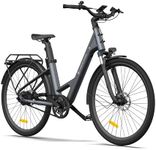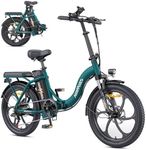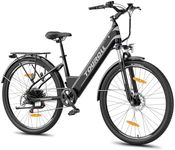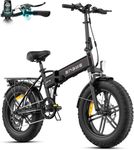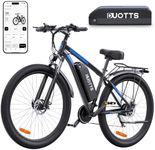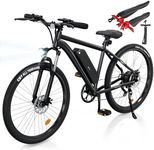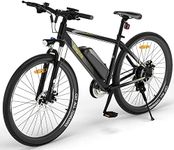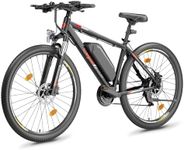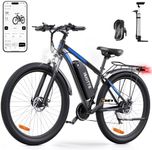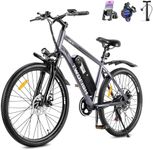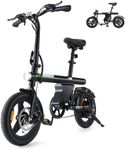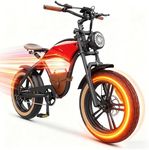Buying Guide for the Best Electric Bicycles
Choosing the right electric bicycle (e-bike) can significantly enhance your commuting experience, leisure rides, or fitness goals. E-bikes come with a variety of features and specifications that can be tailored to your specific needs. Understanding these key specifications will help you make an informed decision and ensure that you select an e-bike that fits your lifestyle and riding preferences.Motor PowerMotor power in e-bikes is measured in watts and determines how much assistance the bike can provide. This is important because it affects the bike's ability to handle different terrains and speeds. Motors typically range from 250W to 750W. A 250W motor is suitable for flat terrains and casual riding, while a 500W motor offers more power for hilly areas and faster speeds. A 750W motor is ideal for off-road adventures and heavy-duty use. Consider your typical riding conditions and choose a motor power that matches your needs.
Battery CapacityBattery capacity, measured in watt-hours (Wh), indicates how far you can travel on a single charge. This is crucial for planning your rides and ensuring you don't run out of power mid-journey. Batteries typically range from 300Wh to 700Wh. A 300Wh battery is sufficient for short commutes and light use, while a 500Wh battery offers a good balance for medium distances. A 700Wh battery is best for long rides and frequent use. Consider your average ride length and frequency to determine the right battery capacity for you.
RangeThe range of an e-bike refers to the distance it can travel on a single charge. This is important for ensuring you can complete your rides without needing to recharge. Range can vary widely based on factors like terrain, rider weight, and level of pedal assistance. Generally, e-bikes offer ranges from 20 to 100 miles. If you plan on using your e-bike for short city commutes, a range of 20-40 miles may suffice. For longer rides or touring, look for a range of 60 miles or more. Consider your typical ride distances to choose an appropriate range.
Frame TypeThe frame type of an e-bike affects comfort, style, and functionality. Common frame types include step-through, step-over, and folding. Step-through frames are easy to mount and dismount, making them ideal for casual riders and those with mobility issues. Step-over frames offer a traditional bike feel and are suitable for more aggressive riding styles. Folding frames are compact and convenient for storage and transport, perfect for urban commuters. Consider your riding style and storage needs when selecting a frame type.
WeightThe weight of an e-bike can influence its portability and ease of handling. This is important if you need to carry the bike upstairs, lift it onto a rack, or maneuver it in tight spaces. E-bikes typically weigh between 40 to 70 pounds. Lighter bikes (40-50 pounds) are easier to handle and transport, while heavier bikes (60-70 pounds) may offer more stability and power. Consider how you plan to use and store your e-bike to determine the ideal weight for your situation.
Pedal Assist LevelsPedal assist levels determine how much help the motor provides while you pedal. This is important for customizing your riding experience and managing your effort. Most e-bikes offer multiple levels, ranging from low to high. Low levels provide minimal assistance, ideal for exercise and conserving battery. Medium levels offer balanced support for comfortable cruising. High levels give maximum assistance, perfect for tackling hills or when you're tired. Think about how much assistance you want and choose a bike with suitable pedal assist options.
